The Arctic wind whips across your face, carrying the faint scent of salt and the promise of an encounter unlike any other. A vast expanse of white stretches before you, broken only by the jagged silhouette of icebergs. Here, on the frozen throne of the north, you wait.

Polar bear hunting is not for the faint of heart. It’s an expedition into a unforgiving landscape, a test of endurance against one of nature’s most formidable predators.
These solitary giants, the apex carnivores of the Arctic, demand respect and meticulous planning. But for the seasoned hunter, the chance to harvest a magnificent polar bear and contribute to conservation efforts is a challenge unlike any other.
Polar Bears and Their Habitat
Polar bears are primarily found within the Arctic Circle, inhabiting regions such as Canada, Alaska, Greenland, Norway, and Russia. Their habitat largely consists of sea ice that forms over the Arctic Ocean during winter months.
This frozen expanse provides a crucial platform for hunting seals, which form the primary diet of these formidable predators. With their muscular body structure and insulated fur coat comprising transparent guard hairs and dense underfur, polar bears are well-suited to endure extremely cold temperatures.
They possess large paws equipped with sharp claws ideal for traversing ice sheets and securing prey. Additionally, their streamlined bodies allow them to swim remarkably efficiently – a skill essential for navigating their icy domain.
Polar Bear Hunting

Studying polar bear hunting behavior is not solely about appreciating these creatures’ natural prowess; it also holds significant scientific importance.
By comprehending how these apex predators hunt seals on sea ice—a behavior intricately tied to their survival —researchers can gain insights into various ecological factors, such as population dynamics and climate change impacts.
Furthermore, understanding the hunting techniques employed by polar bears can help develop effective conservation strategies to protect these magnificent creatures and their delicate ecosystems.
With climate change causing rapid sea ice loss in many regions inhabited by polar bears, comprehending their hunting behaviors becomes even more critical in ensuring their long-term survival in an ever-changing world.
By delving into the fascinating world of polar bear hunting, we can appreciate the intricate relationship between these apex predators and their Arctic environment while recognizing the urgent need for conservation efforts to safeguard their future.
The Basics of Polar Bear Hunting
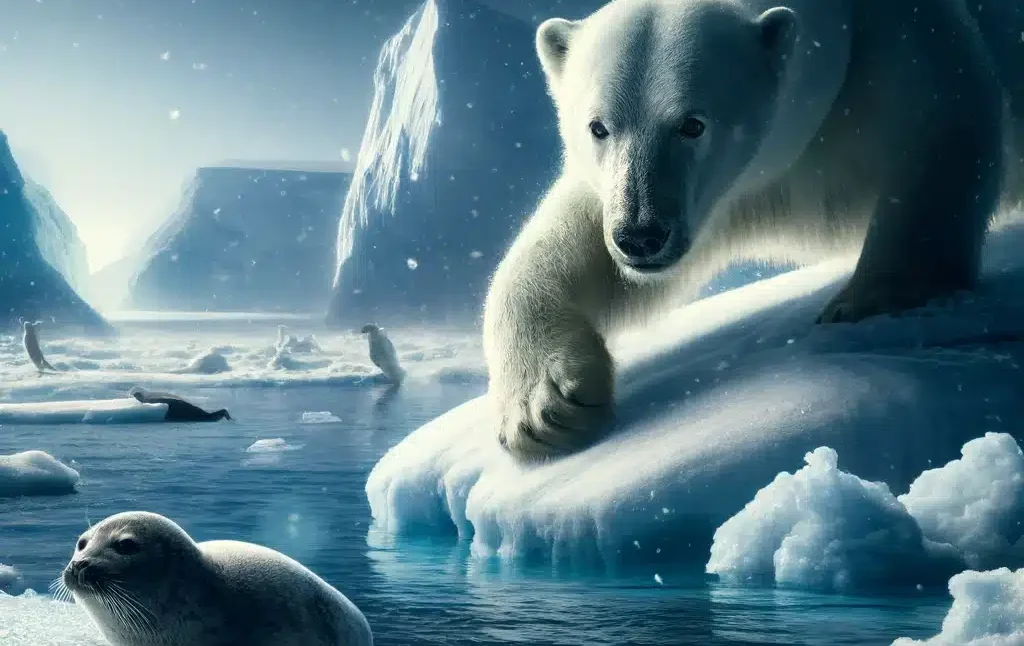
Physical characteristics and adaptations of polar bears for hunting
Polar bears, the majestic apex predators of the Arctic, possess remarkable physical characteristics and adaptations that make them highly efficient hunters. Firstly, their massive size and robust build give them the strength and power to overpower their prey.
Adult males can weigh up to 1,500 pounds (680 kilograms) and stand over 10 feet (3 meters) tall on their hind legs. Additionally, their muscular limbs are perfectly suited for traversing the icy terrain in pursuit of their quarry.
One key adaptation is their exceptional sense of smell, estimated to be 100 times more powerful than humans. This heightened olfactory ability enables polar bears to detect seals from great distances across vast expanses of ice.
Their acute sense of smell allows them to locate breathing holes or cracks in the ice where seals surface for air or bask in the sun. Furthermore, polar bears have evolved thick layers of fat beneath their skin that insulate them from the frigid Arctic waters while providing an energy reserve during periods when prey may be scarce.
Hunting techniques employed by polar bears in the wild
Polar bears employ various hunting techniques dictated by their Arctic environment and the behavior patterns of their primary prey – seals. One prominent strategy involves stalking prey on ice floes.
With stealthy precision, polar bears approach seals by crawling low to blend with the snowy surroundings, minimizing any silhouette visibility that might alert potential victims.
They move slowly and take advantage of any available cover until they are within striking distance. Another effective technique these apex predators employ is ambushing seals at breathing holes.
Polar bears patiently wait near these openings in sea ice where seals come up for air or rest after hunting in underwater crevices. With incredible patience and timing, polar bears lunge at seals as they surface, catching them off-guard and quickly overpowering them with strength.
This technique requires a deep understanding of seals’ behavior and the ability to anticipate their movements accurately. To aid in locating seals in the vast Arctic environment, polar bears rely heavily on their powerful sense of smell.
They can detect odors from miles away and follow scent trails left by seals on the ice. This remarkable olfactory capability allows them to track potential prey in a manner analogous to hounds trailing scents.
Polar bears can efficiently navigate the icy landscape and maximize their hunting success by utilizing their acute sense of smell. Polar bears’ physical attributes and hunting techniques showcase their extraordinary adaptation to the harsh Arctic environment.
Their immense size, powerful build, thick blubber layer, heightened olfactory senses, and expertise in stalking prey on ice floes or ambushing seals at breathing holes form a formidable arsenal for survival in this frozen realm.
By understanding these fundamentals of polar bear hunting, we gain insight into nature’s ingenuity and appreciate the intricate balance within ecosystems where these magnificent creatures reign supreme.
The Prey: Seals and Other Food Sources
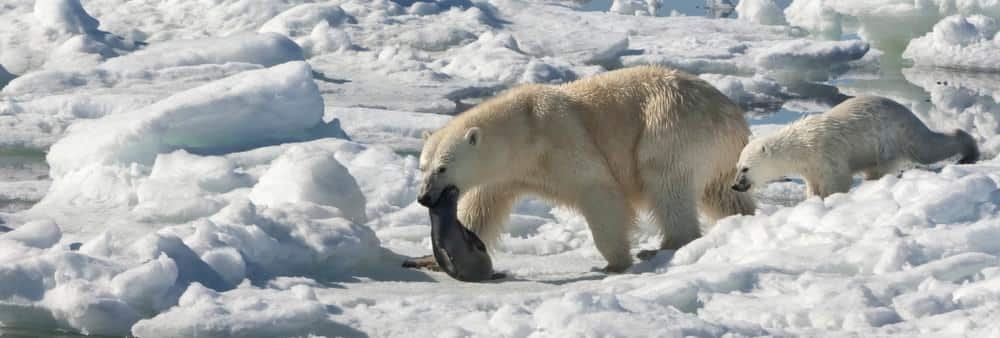
Seals play a crucial role in the diet of polar bears as their primary prey. The Arctic waters are teeming with different seal species, but the two most commonly targeted by polar bears are ringed and bearded seals.
Ringed seals (Pusa hispida) are smaller than other seal species, making them an ideal target for these formidable predators. On the other hand, bearded seals (Erignathus barbatus) are larger and provide a substantial amount of food for hungry polar bears.
Different Seal Species Targeted by Polar Bears
Polar bears have evolved to adapt to the various seal species’ behavioral patterns and habitats to maximize their hunting success. Ringed seals, known for their distinctive dark rings on their light-colored fur, spend significant time on sea ice platforms and underwater breathing holes that they maintain during winter.
These breathing holes provide crucial access points for ringed seals to surface and breathe. Bearded seals also contribute significantly to the diet of polar bears.
These robust creatures prefer deeper waters to ringed seals and often inhabit areas where pack ice is more consolidated. They create breathing holes in thick ice or even use cracks as access points for resurfacing from their dives into the depths of the Arctic Ocean.
Behavioral Patterns and Habitats Making Seals Vulnerable
The behavioral patterns and habitats of both ringed seals and bearded seals make them particularly vulnerable to predation by polar bears. The dependence of these seal species on sea ice means they must constantly find suitable locations for resting, breeding, molting and escaping predators like polar bears.
The creation of breathing holes by both seal species becomes a double-edged sword – it provides them access to air and exposes them to the ever-watchful eyes and powerful paws of polar bears. These breathing holes are crucial for seals’ survival, as they need to regularly resurface to breathe while hunting beneath the ice for fish and other prey.
Polar bears have mastered the art of patiently waiting near these breathing holes or cracks in the ice, using their exceptional sense of smell and keen eyesight to detect any sign of movement. Once they spot a seal surfacing, they swiftly pounce on their unsuspecting prey with remarkable agility and precision.
The Hunt Begins: Tracking and Locating Prey
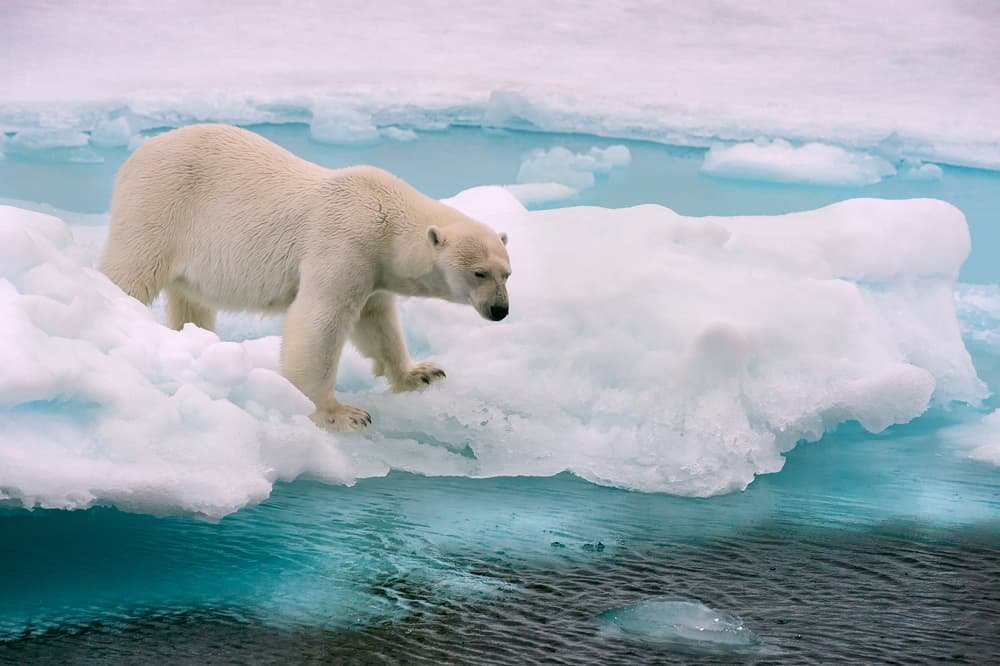
Utilizing scent trails left by seals on the ice
Polar bears have an exceptional sense of smell, which plays a vital role in their ability to track down their prey in the vast Arctic environment. As they traverse the frozen landscapes, polar bears rely on scent trails left behind by seals to lead them to potential hunting grounds.
When a seal moves across the ice, it leaves subtle traces of its odor, invisible to human senses but easily detectable by these Arctic giants. Polar bears can detect these faint scents over long distances with their highly developed olfactory systems.
Once a polar bear picks up on a scent trail, it becomes a game of following it with precision. They methodically navigate the icy terrain, using their acute sense of smell to stay on course and determine the proximity of their prey.
This olfactory prowess enables them to track seals even when hidden beneath layers of snow or ice. Through this remarkable ability, polar bears can locate areas where seals congregate or access breathing holes—prime locations for successful hunts.
Observing breathing holes or cracks in the ice where seals surface
In addition to following scent trails, polar bears are astute observers when identifying breathing holes or cracks in the ice where seals come up for air. Seals require access to open water to breathe properly and often create breathing holes by maintaining openings in thin ice or utilizing natural cracks that form due to shifting sea ice conditions.
Polar bears exhibit remarkable patience as they quietly wait near these openings, ready to pounce when an unsuspecting seal emerges for a breath. They position themselves strategically nearby, camouflaging against the white surroundings until an opportunity presents itself.
Through acute visual awareness and keen observation skills honed over generations, polar bears can accurately anticipate seal behavior, timing their ambush to perfection. Their sharp eyesight allows them to detect even the slightest movement or disturbance in the ice, ensuring they never miss an opportunity for a successful hunt.
By utilizing these tracking and observation methods, polar bears showcase their adaptability and resourcefulness as they navigate the Arctic environment in search of prey. These strategies enable them to capitalize on their keen senses and ensure their survival in one of the most inhospitable regions on Earth.
Strategies Employed by Polar Bears

Ice stalking
Approaching prey silently on ice floes without alarming the polar bears, majestic apex predators of the Arctic, possess remarkable skills in hunting on the icy terrain. One of their primary techniques is ice stalking, which allows them to stealthily approach their prey without causing any alarm.
To accomplish this, polar bears employ a combination of physical adaptations and strategic movements that make them inconspicuous on the vast expanse of ice.
To begin with, polar bears crouch low to blend with their surroundings, skillfully utilizing their white fur to minimize silhouette visibility against the snow-covered ice floes.
This natural camouflage enables them to remain hidden from potential prey, mainly seals they rely upon for sustenance. By minimizing their visibility, polar bears increase their chances of getting closer to unsuspecting seals before launching an attack.
Furthermore, these masterful hunters display incredible patience and control as they slowly crawl toward their prey on all fours. Their meticulous movements ensure minimal noise and disturbance on the fragile ice surface.
With each careful step, a polar bear distributes its weight evenly to prevent cracking sounds that could alert potential prey or cause potential danger for itself.
By utilizing stealth as a key advantage during this slow approach, polar bears increase their chances of securing a successful kill while maintaining the element of surprise.
Although crouching low and crawling silently across the icy terrain during an ice stalk, polar bears demonstrate remarkable adaptability and ingenuity in hunting techniques tailored to Arctic conditions.
Ambush Attacks at Breathing Holes
In addition to ice stalking as a preferred hunting technique employed by polar bears in search of seals, another strategy frequently utilized is ambush attacks at breathing holes – openings in the sea ice where seals surface for air.
These strategic locations give polar bears a unique opportunity to lie in wait, ready to seize their unsuspecting prey as it resurfaces. To execute an ambush attack effectively, polar bears carefully select a prime vantage point near the breathing hole.
With their exceptional eyesight and patience, they spend hours or days stationed nearby, remaining immobile and blending in seamlessly with the surrounding ice. This waiting game is a testament to the polar bear’s ability to exhibit incredible self-control and discipline, understanding that successful hunts require precise timing and favorable conditions.
When the moment finally arrives and a seal pops up at the breathing hole, the polar bear springs into action with explosive speed and power.
The element of surprise gives them a significant advantage during these ambush attacks. With razor-sharp claws and powerful jaws, they swiftly grab hold of their prey before it can react or escape.
This hunting technique allows polar bears to conserve energy by patiently waiting for an opportunity and maximize their chances of securing a successful kill without expending excessive effort or risking injury in prolonged pursuits.
Employing ambush attacks at breathing holes showcases how polar bears skillfully capitalize on the habits and vulnerabilities of their prey.
By utilizing patience, precision timing, and stealthy movements during these encounters, these majestic predators demonstrate their adaptability as apex hunters in one of the harshest environments on Earth – the Arctic.
Ambush Attacks at Breathing Holes
Waiting in the Arctic Silence
One of the remarkable strategies polar bears employ during hunting is their ability to patiently wait near breathing holes for seals to surface. Breathing holes are essential for seals’ survival in the harsh Arctic environment, providing access to vital air while submerging underwater.
Polar bears have keen senses and can detect these breathing holes through smell and visual cues. When a polar bear identifies a breathing hole, it silently positions itself nearby, often lying still for hours, camouflaging its massive form against the surrounding ice and snow.
With excellent vision and acute hearing, polar bears remain constantly alert, intently observing any movement near the hole. They understand that patience is key – waiting for the right moment to strike.
The Art of Precision
Once a seal surfaces at its breathing hole, it exposes itself to potential danger. Sensing vibrations or witnessing subtle movements, polar bears swiftly launch themselves toward their prey with astonishing speed and precision.
With powerful forelimbs and sharp claws providing traction on slippery ice surfaces, they execute their ambush attacks with remarkable skill. Polar bears use their strength to strike swiftly as they lunge toward their prey.
Their massive jaws clamp down on the unsuspecting seal’s head or neck area to immobilize it quickly. By incapacitating their prey efficiently, polar bears minimize any resistance or escape attempts by seals during this critical moment of engagement.

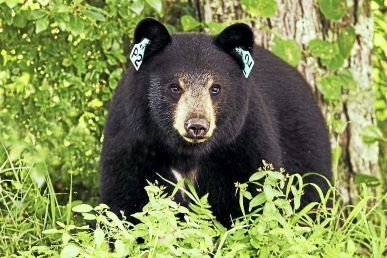


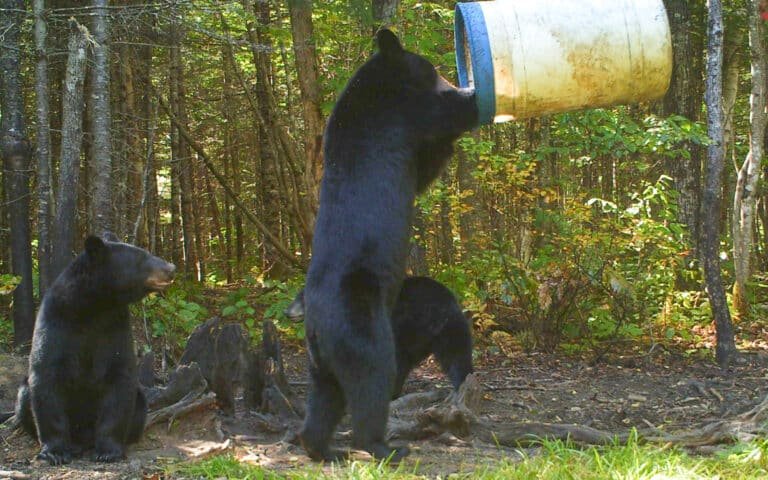
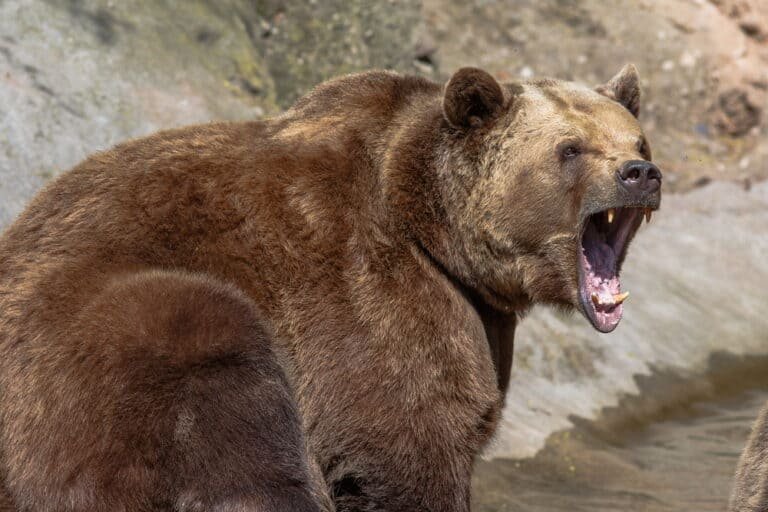
Hey there! I realize this iss kind of off-topic but I had to ask.
Does managing a well-established blog ike yours require a lot
of work? I’m brand new to running a blo but I do write in my
diary everyday. I’d like to start a blg sso I caan easily share my experience annd views online.
Please let me know iff yyou have any recommendations or tips for new aspiring blog owners.
Appreciate it! https://www.waste-ndc.pro/community/profile/tressa79906983/
Наиболее актуальные события мировых подиумов.
Актуальные новости известнейших подуимов.
Модные дома, торговые марки, haute couture.
Интересное место для трендовых людей.
https://rftimes.ru/news/2024-07-05-teplye-istorii-brend-herno
Very interesting points you have observed, regards for posting.Raise range
I don’t think the title of your article matches the content lol. Just kidding, mainly because I had some doubts after reading the article.